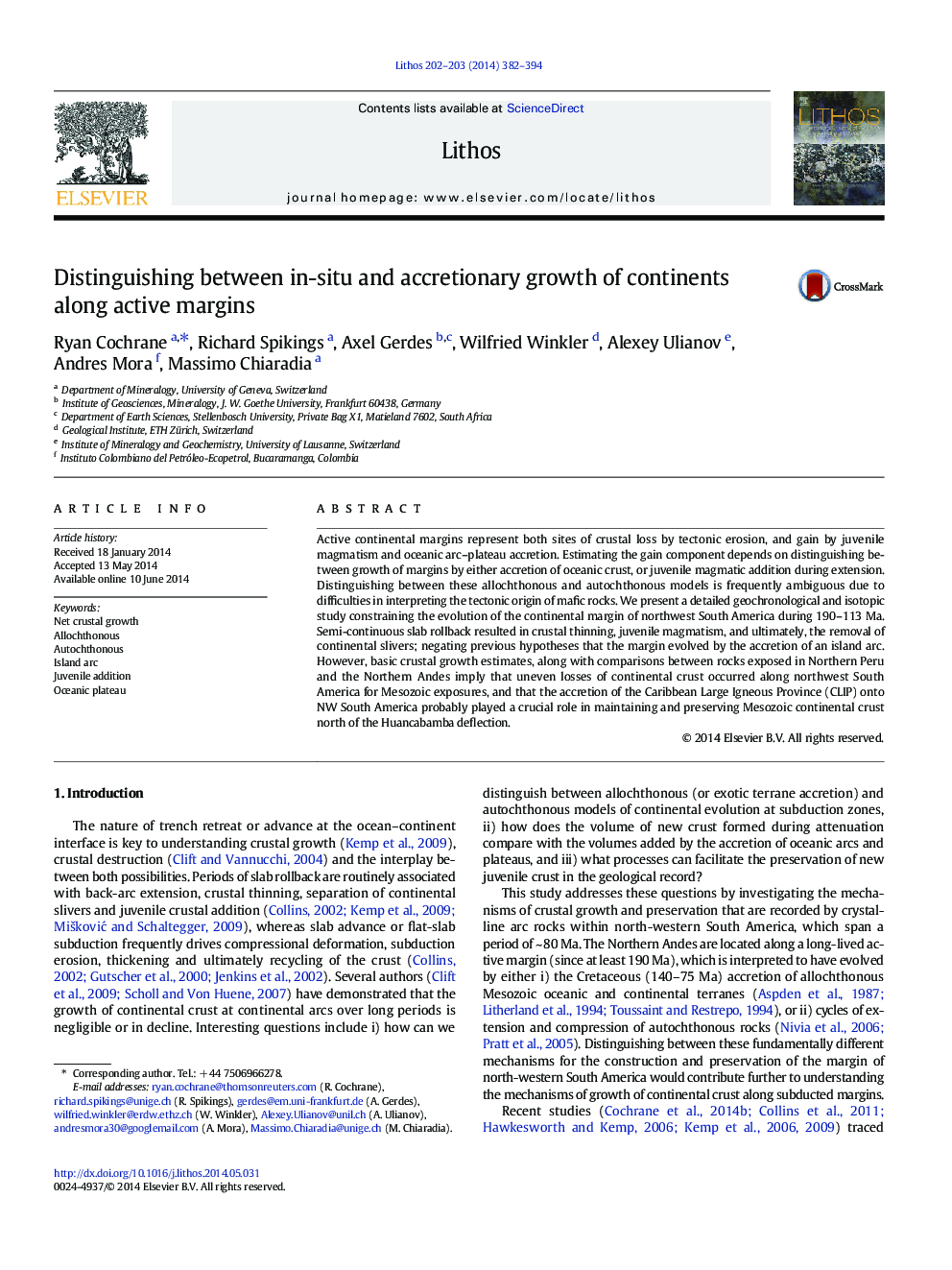| Article ID | Journal | Published Year | Pages | File Type |
|---|---|---|---|---|
| 4715891 | Lithos | 2014 | 13 Pages |
•An extensive temporal and isotopic dataset for NW South America is presented.•NW South America evolved in-situ during 190–113 Ma, which differs from previous models.•Allochthonous (exotic terrane accretion) versus in-situ models of crustal evolution are resolved.
Active continental margins represent both sites of crustal loss by tectonic erosion, and gain by juvenile magmatism and oceanic arc–plateau accretion. Estimating the gain component depends on distinguishing between growth of margins by either accretion of oceanic crust, or juvenile magmatic addition during extension. Distinguishing between these allochthonous and autochthonous models is frequently ambiguous due to difficulties in interpreting the tectonic origin of mafic rocks. We present a detailed geochronological and isotopic study constraining the evolution of the continental margin of northwest South America during 190–113 Ma. Semi-continuous slab rollback resulted in crustal thinning, juvenile magmatism, and ultimately, the removal of continental slivers; negating previous hypotheses that the margin evolved by the accretion of an island arc. However, basic crustal growth estimates, along with comparisons between rocks exposed in Northern Peru and the Northern Andes imply that uneven losses of continental crust occurred along northwest South America for Mesozoic exposures, and that the accretion of the Caribbean Large Igneous Province (CLIP) onto NW South America probably played a crucial role in maintaining and preserving Mesozoic continental crust north of the Huancabamba deflection.
